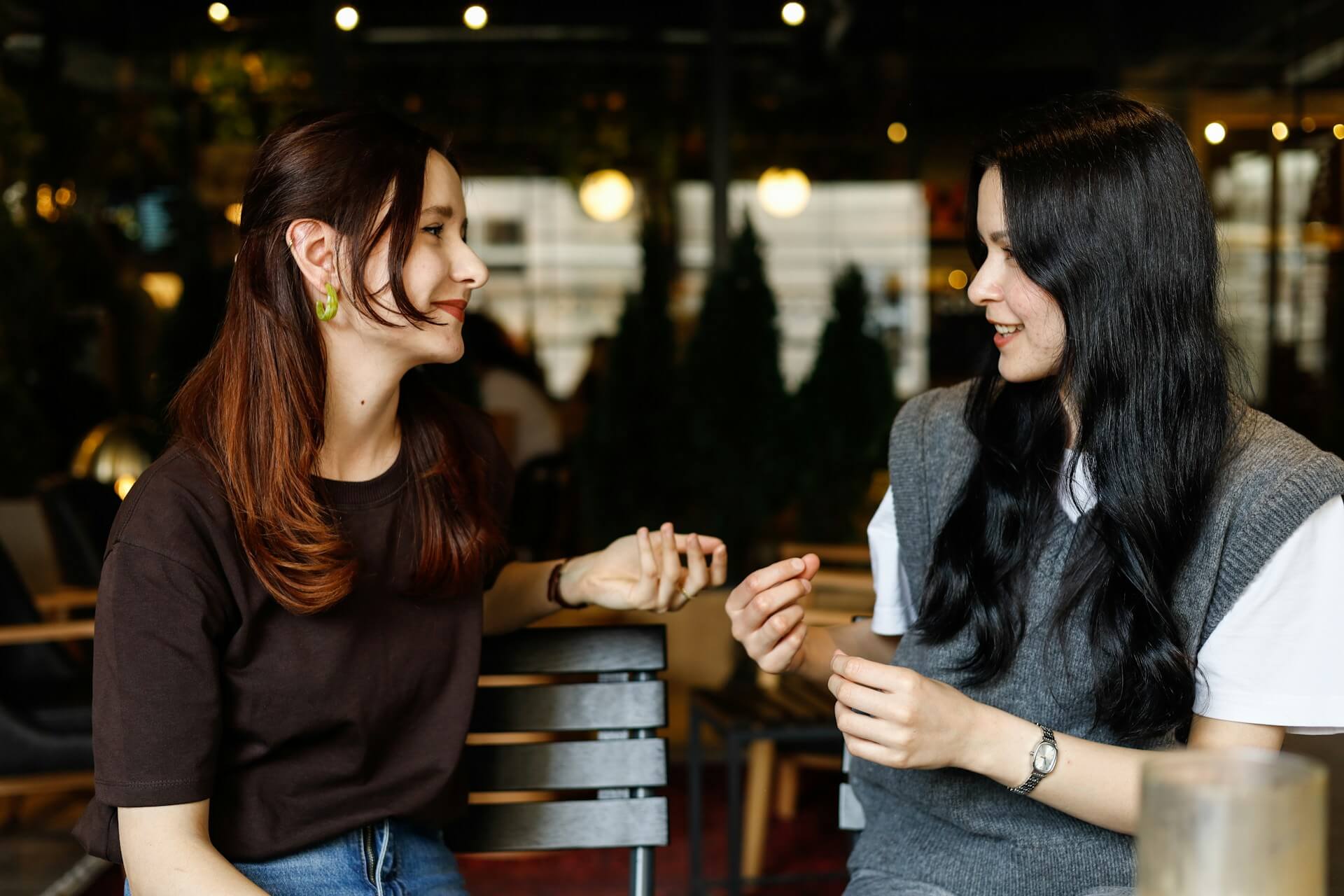Some conversations flow like a breeze. Others feel awkward and dry after just a couple of lines. Whether you’re at a dinner party, meeting someone new at a conference, or just trying to build better relationships at work, knowing how to hold someone’s attention can make a big difference. But starting a conversation that actually leads somewhere? That takes the right tools and a little practice.
The good news is you don’t need to be the most outgoing person in the room. Keeping people genuinely interested comes down to using the right conversation technique. A few small shifts in what you say and how you listen can instantly help you connect in a more natural way. Here’s how to get started.
The Art of Asking Open-Ended Questions
If there’s one simple shift that changes the whole feel of a conversation, it’s moving from closed questions to open ones. Closed questions are the kind that get you a short answer, usually just a yes, no, or a number. That’s fine if you’re trying to figure out what time something starts, but not great if you want to keep a back-and-forth going.
Open-ended questions make space for more than a quick reply. They invite real thoughts, stories, and opinions. That’s what keeps the conversation alive. For example, instead of asking, “Did you like the concert?” try something like, “What did you think of the concert?” or “What part of it stood out for you?” The second approach opens the door for a more thoughtful answer, and when they do share, you have more to build on.
Here are a few other open-ended questions you can use in different settings:
– What brought you here today?
– How did you get into that line of work?
– What’s been the most exciting thing you’ve worked on lately?
– What are you looking forward to this week?
When someone gives more than a yes-or-no answer, the conversation gains depth. These types of questions help people feel heard. You’re not just filling silence, you’re creating a space where real connection happens. It encourages more sharing and makes people want to keep talking.
Active Listening: The Key to Keeping Interest
Even the best question will fall flat if the other person doesn’t feel like you’re actually listening. Most people can tell when they’re being tuned out. Active listening means being fully present in the conversation, not thinking about what you’ll say next or checking your surroundings.
Practicing active listening is easier when you build it into your habits. Start with:
– Holding comfortable eye contact
– Nodding or responding with short phrases like “I see” or “That’s interesting”
– Letting people finish their thoughts without cutting them off
– Asking a follow-up question based on something they mentioned
Say someone tells you they recently went on a cross-country road trip. Rather than shifting the focus to yourself with your last vacation story, try following up with, “What made you choose that route?” or “What stood out most on the trip?” It keeps the attention on them and allows for a deeper response.
Active listening isn’t just a show of good manners. It’s an underrated way to keep things interesting. When someone sees that you actually care about what they’re saying, they’ll feel more open to continuing the conversation. That openness helps build trust with every exchange.
Sharing Personal Stories and Experiences
Storytelling can make any conversation more impactful. When you share something real from your life, it signals honesty and adds personality. The bonus? It usually invites the other person to do the same.
Relevance makes the difference. Share stories that naturally fit the topic. If you’re both talking about travel, you might bring up a moment when you got lost and discovered a great little café by accident. It makes the chat more colorful while adding a personal touch.
But it’s easy to go too far. Oversharing or telling stories that drag on too long can make it tricky for the other person to stay engaged. The trick is balance. Keep it short and relevant. Then invite them in with questions like, “Have you ever had something like that happen?” That lets the conversation stay mutual and engaging.
Storytelling works best when you stay relaxed. You’re not performing or trying to impress. Just be real and relatable.
Using Body Language Effectively
Body language has a lot to say, even when you’re silent. It can help set the tone, create comfort, and subtly guide how the conversation flows. Think about two similar scenarios. One where someone talks to you with their arms crossed, barely looking at you. Then another where they lean in slightly, smile, and stay open in posture. Which one makes you feel more welcome?
To use body language in a positive way:
– Keep an open stance
– Avoid crossing your arms or turning away
– Smile when it feels natural
– Nod or use light gestures to show engagement
– Maintain comfortable eye contact
Being in tune with your body language can help others feel valued without saying a word. It also shows that you’re focused and genuinely interested. On top of that, pay attention to their body language. Are they backing away or shifting around a lot? That might indicate discomfort or impatience. In that case, you could adjust your tone or lighten the conversation to help it flow again.
Reacting to nonverbal cues can help gently steer the conversation in a better direction. It’s like having another tool in your kit without saying anything at all.
Wrapping Up the Conversation with Grace
Knowing how to end a conversation smoothly leaves a lasting impression. People remember how interactions felt. A graceful exit isn’t just polite, it opens the door for future conversations without leaving things awkward.
You can start wrapping up naturally by saying something like, “It’s been great chatting,” or, “I’ve really enjoyed hearing your thoughts.” This respects their time and signals that the conversation is coming to a close.
If you’d like to follow up in the future, this is the time to mention it. Say something like, “Let’s catch up again soon,” or, “I’d love to hear more next time we talk.” That way, you’re closing on a friendly note and making it easier to reconnect later.
Gratitude makes a difference. A simple “Thanks for spending time with me” makes people feel appreciated. Small gestures like that help slot you into the “positive memory” file in their minds.
Creating Meaningful Connections That Last
Great conversations go beyond surface-level exchanges. When you use open-ended questions, practice active listening, share stories, and stay aware of your body language, something changes. Your interactions start to feel more real.
Not every conversation will turn into a deep connection. But being intentional with how you show up in small talks, group chats, or one-on-one meetings builds trust and invites others to engage fully too.
These techniques work best when practiced often. Let them become second nature. That way, whether you’re networking, making a new friend, or reconnecting with someone, conversation becomes easy and natural.
Keep practicing. Stay curious. And focus on making people feel valued when you talk with them. Those small steps are what lead to conversations that stick and relationships that grow.
Building genuine connections is invaluable in both personal and professional settings. To dig deeper into refining your conversation technique, explore episodes from The Art of Charm. Whether you’re looking to grow your social confidence or improve how you engage with others, there’s something insightful waiting for you.



